Ford Tries To Increase North American Capacity, Escape & Fusion in High Demand, Short Supply
After adding 600,000 units to its North American capacity within the past two years, Ford is trying to find ways to increase output of the Escape crossover and midsize Fusion, both of which currently have about 40 days supply. The Fusion is particularly in short supply on the east and west coasts, a good sign for any domestic automaker these days. A 60 day supply of cars in inventory is generally considered normal for the U.S. auto industry. Automotive News is reporting that at the Center for Automotive Research’s Management Briefing Seminars, held in Traverse City, Michigan, Ford VP for North America manufacturing, Jim Tetreault, said, “We’re still looking at how we get more out of every plant, and that’ll be a focus for as long as the demand is as strong as it is.”
GM Will Debut New Spark In 2015, Delays Aveo Launch
Though General Motors has not commented, a spokesman for the Korean Metal Workers Union, which represents employees of GM Korea, said that the automaker plans to launch the next generation of the Chevrolet Spark in the first half of 2015 but that next Aveo (sold as the Sonic in the United States) will be delayed.
Daimler Not Giving Up On Going After Rolls-Royce and Bentley, New "Super S Class" to Go On Sale in 2015
Though Daimler shuttered its Maybach ultra-luxury brand, it isn’t giving up on selling cars in the $200,000+ price range. With the $470,000 Maybach, Mercedes-Benz tried to compete with ne plus ultra cars like the Bentley Mulsanne and Rolls Royce Phantom. In the ten years that the Maybach was produced, Daimler sold about 3,000 of them, about how many Phantoms Rolls-Royce sells in a year.
Bentley Confirms SUV, Built at Crewe, for 2016
Bentley Motors today has confirmed that a fourth model will join the Bentley lineup, this one a SUV, and that it will be built at the British luxury car maker’s Crewe plant starting in 2016 after a £800 million ($1.228 B USD) investment in the facility. The automaker says that over 1,000 new jobs will be created to manufacture the unnamed SUV, which is said to look nothing like the widely criticized EXP 9F concept shown last year. A very basic sketch of the planned vehicle was also released. The company said that Bentley customers have responded “extremely” positively to the idea of a SUV that wears the winged B and claims that the car will be “a thoroughbred Bentley” and have styling that sets “it apart from any other SUV on the road”. Like the company’s Continental models which are related to the Audi A8 and Volkswagen Phaeton, though, the new Bentley SUV will likely share a platform and components with other VAG vehicles.
Bentley press release below.
Lotus Gets Three Year Reprieve From Owner DRB-Hicom But New Esprit Dead
Final assembly at Lotus’ Hethel plant
DRB-HICOM, which owns the Proton car company in Malaysia and Lotus in the UK, announced at the Jakarta launch of the Proton Preve that the British specialist sports car maker and engineering firm has been “cleaned up” and is proceeding with a three year product plan based on variants of the Elise, Exige and Evora cars, starting with the £52,900 Exige S roadster.
Jaguar To Introduce Range Of All Aluminum Entries, Including Small Sedan, Crossover
Land Rover’s Solihull plant will produce all-aluminum 3 Series fighters for Jaguar, starting in 2015
The Ford Mondeo based X-Type failed to get Jaguar a foothold in the segment that is usually defined by the BMW 3 Series and the cars that compete with the 3. Now the Financial Times has reported that Jaguar will be launching an entire line of entry level luxury vehicles for that critical segment and that the new cars, said to be ready for sale about two years from now, will benefit from Jaguar’s expertise with lightweight aluminum structures.
Next Chevy Cruze Delayed For A Year Due to Engineering Changes and Strong Sales of Current Model
Reuters is reporting that the next iteration of the Chevy Cruze, originally due at the end of 2014, will not go into production until December 2015, as a 2016 model year car.
Shuttered Canadian Plants May Help Big Three Ease Projected Capacity Crunch
A study commissioned by Canada’s federal government suggests that Canada could be in a position to benefit from strong auto sales from the Big Three OEMs, and a lack of capacity could lead to more manufacturing jobs for Canada, including the revival of mothballed factories.
Mahindra Denies Alabama Production Plans
Opel Turns 150, Commences Cutting
Ever since Steve Girsky an his “merry band of hatchet men” touched down in Rüsselsheim, Bertel has been warning that GM’s European division was about to embark on a serious cutting binge. But our worst fears, namely that Opel could go away entirely, have yet to be realized. Instead it seems that self-destructive mutilation will be attempted first, in order to stem the gushing red ink at Opel where at least €1b in losses are expected next year. Automotive News Europe [sub] reports that the first round of cuts will hit Opel’s Internationalen Technischen Entwicklungszentrum (ITEZ, “International Technical Development Center), as an IG Metall union document foresees some 1,420 product development position cuts (from a staff of some 6,000).
Chart Of The Day: The Rise And Fall Of The Chevrolet Cruze
Ever since emerging from bankruptcy, the Chevrolet Cruze has been something of a symbol of GM’s rebound. Widely hailed by the automotive media as General Motors’ strongest effort to date in a compact segment that has become increasingly important in recent years, the Cruze seemed to show that the “new” GM was capable of selling smaller cars on their merits, rather than as afterthoughts to more profitable truck, SUV and large car offerings. And indeed, through the first half of this year, it seemed that the Cruze was something of a roaring success, regularly outselling its segment competitors. But then, in June, when production shifted from 2011 models to 2012 models, something changed: sales started to slow, and inventories started to rise. As Cruzes began piling up on dealer lots, GM trimmed production moderately, but still, inventories began to grow out of control. Clearly something was going wrong.
UPDATED: “Big Six” compact sedan monthly sales graph (Jan-Nov, 2011) added to gallery after the jump.
Is Fiat Considering A Pullback From Italy?
As the world struggles to come to grips with economic uncertainty, Bertel has been reporting that Japanese automakers are abandoning their homeland for lower-cost production centers overseas. Now, with economic turmoil shifting to Europe, it seems that Fiat could possibly be preparing for a pullback from Italy. Two basic factors are driving Fiat towards reconsidering its global manufacturing footprint: first, its struggles in the European market where margins are slim and dropping, second, its battles with Italian unions. Though Marchionne’s latest comments are ambiguous at best, some see these factors pushing the Italian automaker away from the market that gave it birth.
UAW: The War On Transplants Is Still On, Dealers On The Front Lines
With a tough negotiating session with its traditional employers now complete, the United Auto Workers are turning their focus back to the year’s primary goal: organizing the transplant factories. 2011 was supposed to be the year in which the UAW took down “at least one” foreign-owned auto plant, with the union’s boss even going as far as to say
If we don’t organize the transnationals, I don’t think there is a long-term future for the UAW
But as we found, the UAW is not welcome in the South, where most of the transplant factories are found. And with Honda, Hyundai, Toyota and VW all rejecting the UAW’s advances in some form or another, the union’s options are fairly limited. So instead of taking on the factories directly, the UAW is bringing back a questionable tactic from the days when it was misleadingly bashing Toyota for “abandoning” the NUMMI factory: they are taking the fight to dealerships.
Ferrari's Engine Problem
It’s no secret that Ferrari has been wrestling with the inevitable conflict between its bellowing V12s and European emission regulations, but that’s not the only challenge facing the Prancing Horse’s powertrain division. Sure, there’s the increasingly-tenuous link between the Scuderia’s Formula One technology and its road cars [sub], but in the short term that actually helps the emissions issue by creating a pretext for bringing KERS to the road (where it otherwise has little role). In fact, the real issue for Ferrari’s powertrain team is not even a “Ferrari issue” at all, but a Maserati issue.
Chevy Idles Cruze Production As Inventories Build
GM has made much of the fact that its Chevrolet Cruze compact has enjoyed strong sales this year, but volume alone isn’t enough to make it in today’s car industry. The key to profitability is keeping production in line with sales, so that plants don’t overproduce, in turn forcing profit-sapping incentives to move the metal. And, as these charts show, GM has been having success selling the Cruze, but not to the extent that it needs to keep production at its current levels. The graph above shows monthly production and sales levels for this year, and it shows that GM has already tried to adjust production once to keep it in line with slower-than-expected sales. But that wasn’t enough. With sales volume dropping the last four months in a row, and inventory jumping from 33 days to 43 days in the month of October alone, the UAW is reporting that the Lordstown plant where Cruze is built will be idled for the entire week of November 28. According to the announcement
The down week is necessary to align production with current market demand. The scheduling modification is attributed to traditional seasonal buying behavior coupled with competitors’ recovering inventories previously impacted by the March earthquake in Japan.
Like a lot of recent Detroit products, the Cruze has received a lot of positive press due to its giant improvement in quality and sales compared to its predecessor. But with demand softening, and GM’s brass fretting over profitability margins as the market shifts to smaller cars, it’s clear that the Cruze’s ultimate success has yet to be proven.
2012 Honda CR-V: See It Now, Buy It… Later
Where Will The Chevrolet Spark EV Be Built?
As I noted earlier this week, GM’s decision to bring a pure-electric version of the Chevy Spark to the US opens up an interesting challenge to its “range anxiety”-centric marketing approach. But WardsAuto reports that there’s another challenging question coming out of the decision: where will the baby EV be built? And as I’ve found, GM’s reticence on the topic of the Spark EV program only deepens the mystery for Wards, which writes
Some media are reporting the EV will come from South Korea, where gasoline- and diesel-powered Sparks currently are produced. If so, that’s news to the folks at GM Korea.
Steel Industry: Replace Tailpipe Emissions Testing With Lifecycle Analysis
Light-weight materials such as carbon-fiber, aluminum and magnesium are widely touted as key components of the drive towards greater fuel economy. Which explains why the automotive steel supplier industry is suddenly calling for an end to tailpipe emissions testing and a switch to the more holistic life cycle analysis testing. According to a press release from WorldAutoSteel, an industry group, the production of steel alternatives can create up to 20 times the carbon emissions of steel.
GM: Volt Second Shift Delayed, 60k Global Units Still Planned For 2012
The Chevrolet Volt may be beating cars like the Jaguar XF and the Lincoln MKT in the sales race, but GM won’t come close to building 120,000 of the plug-ins next year as the Department of Energy was expecting. Today GM confirmed to Automotive News [sub] that it will make 60,000 Volts next year… and it will do so while remaining on a single shift. GM had previously planned to add a second shift at the Det-Ham plant late this fall, but is putting that off until midway through next year, when production of the ’13 Malibu begins there. Until then, The General is adding 300 workers to the 10-hour, four-days-per-week single shift, a move the company says
will significantly reduce costs, and has no impact on the plant’s ability to make 60,000 Volts and Amperas (the European version of the Volt) in 2012.
Think 60,000 units is still more Volt than America will buy? Well, you’re right so far, but 15,000 of those will be exported to Europe, so GM only has to sell 45,000 US-market Volts next year. Although considering the Volt won’t crack 10,000 units this year, that’s still some strong projected growth. And as usual, the union local President sums up the situation with more candor than any executive would:
The sooner the better, but I guess demand will dictate when that happens. Hopefully we’ll get a third shift someday, too.
Sergio Marchionne: International Union-Buster
Considering the United Auto Workers’ VEBA fund is still Chrysler’s second-largest shareholder, CEO Sergio Marchionne is taking an amazingly hard line with the union. With a GM deal long done, and Ford’s deal moving towards approval, Chrysler is the last automaker on the UAW’s to-do list… and Marchionne tells Bloomberg he’s up for a fight if necessary, saying
I sincerely hope that we don’t have to get to arbitration. But if necessary, Chrysler will go there. We and GM are completely different
Marchionne is reportedly pushing the UAW for a number of tough concessions, including a mere $3,500 signing bonus (compared to $5k at GM and a reported $6k at Ford), and the elimination of a planned 2015 cap on entry-level “Tier Two” workers (at 25%). And though both of these are tough asks, he’s using UAW boss Bob King’s concept of union internationalism as a cudgel against the UAW, playing Italian unions off their American counterparts. And as a result, he could earn Chrysler a favored place among America’s unionized autoworkers.
Viper Used OEM Rubber Around The Ring – But What's A "Production Car?"
Is China's Cheap Labor A Thing Of The Past?
The prospect of a Chinese auto industry growing at insane speed thanks to a booming market and resiliently low wages has long kept auto industry execs up at night, most notably inspiring Sergio Marchionne’s acquisition of Chrysler. But basic economic principles dictate that you can have a high rate of growth or low wages… but not both. Growth inevitably drives inflation, which drives up wages, which in turn slows growth. And according to a report in the Wall Street Journal [sub], that dynamic is already taking hold.
Jae-Man Noh, head of Hyundai’s joint-venture operations in China, said average manufacturing-worker wages in China—about 27,000 yuan ($4,200) a year per worker in 2009—are likely to double by 2015 from current levels.
Auto makers are expected to be affected as much as other industries by the trend, if not more, Mr. Noh said, adding that wage costs for many foreign auto manufacturers already have doubled in less than a decade. He said that a rival foreign auto maker that Hyundai has researched has seen worker wages in China rise to 49,000 yuan a year per worker in 2010, up from 24,500 yuan a year in 2003.
“We need to let go of our perception that the Chinese market is a low-cost production base,” Mr. Noh told a group of reporters at Hyundai’s office in Beijing. He didn’t offer specifics on Hyundai’s wage costs in China.
And though the laws of supply and demand made this development inevitable, the story of the decline of China’s low-wage manufacturing base is a lot more interesting than you might think. After all, economic and historical forces may seem mechanical in the abstract, but on the ground level they work in dramatic, disruptive ways.GM Considering Chinese Volt Assembly
The Detroit News‘s David Shepardson has a way of being on hand with a microphone whenever GM CEO Dan Akerson lets loose with a memorable line, and today he has Akerson telling a Bloomberg News Forum that the green star of the American auto turnaround, the Chevy Volt, could be built in China within a few years. Said Akerson
We’re going to export into China for probably a year or two and see if it gets a take … if customers set the right usage patterns. If it does, we may manufacture it there.
UAW Contract Negotiations Blow Past Deadline, Marchionne Lashes Out
The United Auto Workers and the Detroit automakers have been locked in negotiations for months now, as both sides seek to redefine their relationship in the post-bailout era. And though all sides have stressed the importance of avoiding intractable disputes in an alleged new spirit of cooperation, it seems that the prospects of a quick, painless conclusion to negotiations remains elusive. The UAW’s contracts with Chrysler and GM both blew past their deadlines at midnight last night, and Ford, the only manufacturer at theoretical risk of a strike, extended negotiations earlier this week. TTAC has not covered these negotiations in much depth for the simple reason that little information leaks out of them. But with contracts expiring and optimistic rhetoric crashing on the rocks of reality, the frustration is clearly starting to boil over. And who is surprised that Fiat-Chrysler CEO Sergio Marchionne is the first to let his frustration show?
Are You Ready For: An American Volvo?
The national character of auto brands is a tricky thing. For decades, Volvo wore its Swedishness on its sleeve, emphasizing the values that made Ikea, Abba and Swedish porn so popular in the US… even when it was an outpost of the Ford empire. And then the unthinkable happened: Chinese up-and-comer Li Shufu bought the brand and rolled it into his Geely empire. In the world of national-character-branding, being bought by a Chinese firm is something like hiring Casey Anthony as a brand ambassador, or using a mascot called “Mr Melamine Milk” (another nightmare scenario can be found here). So, how does a brand like Volvo, that was built on Swedishness, get past the “China Factor”? By doubling down on Swedishness? How about by building cars in the US?
AN: McAuliffe's Chinese EV Factory "Dead On Arrival"
Remember Bertels’ stranger-than-fiction write-up of former DNC Chair Terry McAuliffe’s Mongolian EV /Visa plant? Charles Child at Automotive News [sub] has looked at McAuliffe’s scheme and comes away less than entirely impressed, noting that
even casual scrutiny of his vision reveals overwhelming obstacles. Let’s be plain: His plan is dead on arrival.
You won’t find a zinger like that in Bertel’s piece, but only because he keeps his head down detailing the entire bizarre history of McAuliffe’s venture, its roots as the “Hybrid Kinetic Motors” visa scheme, its ties to a couple of notorious former Brilliance boys and its money-first, product-later approach. Child’s takedown isn’t as well researched (nor does it contain anecdotes about former a Ambassador driving a lawnmower into a swimming pool), but the few remaining folks out there who think the former Democrat fundraiser might be on to something big should probably read on. After all, McAuliffe has put so much hype out there, this story is something of a target-rich environment for truth-tellers.
Will Rising Euro Push Alfa/Jeep Compact CUV Production To Toledo?
Bloomberg reports that Fiat is considering moving production of planned Alfa/Jeep-branded compact CUVs from its Italian Mirafiori plant to the US, as a rising Euro forces tough production choices. Production of some 280,000 units per year were planned to start at Mirafiori in late 2012, but Fiat may now build an as-yet unannounced subcompact there instead. According to Bloomberg’s reporting, Fiat/Chrysler CEO Sergio
Marchionne, while confirming his commitment to invest at the Turin facility, told Piedmont Region President Roberto Cota Aug. 29 that he may change the production plans for the plant.
“Fiat is evaluating which model it will build at Mirafiori,” Cota said after meeting the CEO.
Toyota Smells The Hatchback Comeback, Drops Yaris Sedan
When Toyota built the first generation of its Vitz subcompact in 1998, the firm had no plans to sell it in the US under the Yaris nameplate (as it was called in Europe). Instead it sold a four-door and two-door version of the Platz, which was mechanically identical but had unique sheetmetal (except for the front doors), as the Echo. The Echo fell into a pattern that seems to have repeated itself several times in Toyota’s recent subcompact past: a year of growth, and then a drop. Eventually, Toyota brought the Yaris nameplate to the US, with a hatchback option in tow, and found its strongest performer in this class since the Tercel.
Now, with the hatchback bodystyle back in vogue, Toyota’s dropping the Yaris sedan altogether for the new generation, debuting later this year. It’s not the JDM/Euro Yaris/Vitz which Bertel showed us back in December, but it is being built at the revolutionary Sendai plant he visited in Fbruary. And without a sedan counterpoint, it will definitely mark an entirely new approach for Toyota’s US-market subcompact strategy.
Honda Joins The Guanajuato Gold Rush, Toyota On The Way?
Around the time of the founding of the United States, the Mexican state of Guanajuato became home to of the one of the biggest silver mines in the world, which produced as much as 2/3rds of the world’s supply of silver at its peak. Today it’s not precious metal that’s driving Guanajuato’s booming economy, but cars, as the world’s automakers flock to Central Mexico. Between 2005 and 2008, GM, Ford and Michelin dumped $1.8b into production in the state, and the expansion is still picking up steam. In the last year, Volkswagen invested $800m in engine production capacity in Silao, Pirelli built a $210m facility and Mazda just revealed it would build a new compact car plant there in June. Toyota is said to be the next to set up shop in Guanajuato, but for the moment Honda is the latest automaker to announce new operations in Guanajuato, as Automotive News [sub] reports the Japanese automaker will spend $800m on an assembly plant there. Honda, which is fleeing a strong yen which has battered Japanese exports, will start building 200k subcompacts per year in 2014. Clearly Guanajuato’s got it’s automotive mojo flowing… but are the days of new Japanese transplant factories in the US over? Is it only a matter of time before the coyotes start smuggling Detroiters into Silao, Celaya, and the Puerto Interior??
GM Will Build Less To Make More
“In attempts to boost profitability, GM wants to cut the number of vehicle platforms by half over the next decade and consolidate the number of engines,” reports the DetN. That’s the good news. The bad news is that “GM’s executives admit the automaker continues to have an inefficient manufacturing network, weak supplier relations and too many variations in the types of engines and vehicle underpinnings it uses to build cars and trucks globally.” If the DetN says it, then it must be true. Putting platforms and engines on a diet is seen as the cure.
The Case For GM, In Glorious Powerpoint
With GM’s share price currently hovering below $25, well under its $33 IPO price, The General is holding its second annual Global Business Conference in hopes of encouraging investors the world over to buy into its turnaround. A webcast is currently streaming over at the GM Investor Relations website, but the key points are available in slides available in PDF here. The presentation involves nearly every level of GM’s business, so listening in and reading the entire PDF is going to be the best way to make sense of what GM is trying to communicate… but if you just want an overview, check out the gallery below for a few hand-picked slides, illustrating some of the more important points.
UAW In Top Secret Talks With "Vast Majority" Of Transplants
Despite the fact that no transplant automaker has admitted to being in direct talks with the UAW, union boss Bob King told the Center for Automotive Research’s Management Briefing Seminar [via Reuters]
The vast majority of the assemblers here in the United States have at least agreed to confidential discussions. We’ve had productive discussions. The last thing we want is confrontation.
So, the issue isn’t that the transplants are all responding to the UAW’s overtures like Honda, which has said
Honda has had no dialogue with the UAW and has no interest in a discussion with them.
No, talks are happening with the “vast majority” of transplants… they just happen to be secret talks (which, at least in the case of VW, appear to be going nowhere). That in itself is strange, considering the UAW’s previous, highly-public approach to naming and shaming non-union transplant manufacturers. More likely: secret talks keep the union from losing face and the transplants from looking like “human rights abusers.” My how things change fast…
The Case Against UAW Representation On Automaker Boards
One of the many defining differences between this year’s contract negotiations between the Detroit automakers and the UAW is a new possible concession on the table: boardroom representation for the union. Inspired by the German system of works councils and union representation on supervisory boards, UAW President Bob King told Bloomberg that
If I had a magic wand, I’d take the German law and put it in the U.S… Workers should have representation on the board
But, in a thoughtful editorial, the Detroit News’s Daniel Howes warns that board representation may be more of a challenge to the union than a benefit. Howes notes
The UAW’s pursuit of board-room seats, to the extent it becomes a key demand in this post-implosion bargaining season, is fraught with potential complications. Among them is the cultural misperception that what is deeply embedded in Germany’s corporate reality is easily transferrable to 21st-century industrial America.
Did GM Greenlight the EN-V?
Don’t freak out about 3D. To use YouTube’s 3D player, start the video, then pause and click on the “3D” icon that will appear in the menu bar. You can either turn off 3D and watch in 2D/mono or select from a variety of 3D formats. Video courtesy of Cars In Depth
Either it’s the blogosphere’s version of playing telephone, or General Motors has committed itself to producing the Segway based two passenger networkable EV pod that GM calls EN-V. The EN-V is seen as a solution to driving congestion and safety in densely populated urban areas. It can be driven or can operate autonomously, in network with other EN-Vs, with electronic nannies preventing accidents and protecting pedestrians. GM’s been giving the three EN-Vs that it’s made so far a workout, visiting expos, car shows and engineering conventions, giving out test rides. But does GM actually have any firm plans to build the thing? It depends on who you ask…
After A Whole Lada Production, A Russian Classic Retires
Surf over to www.lada.ru, and click on “Автомобили” (automobiles), and you’ll find four model lines: Priora, Kalina, Samara and the classic, Putin-favored 4×4. Not pictured in the lineup, but still present in a sidebar on the site, is a link for one more model: the 2107. The first 2107 (then called the 2101), was built in April, 1970, developed off the internals of the Fiat 124, which itself was already four years old. And ever since 1970, the 2101 “Classic” has been rolling off an assembly line in Tolyatti, providing over 16.8 million sets of cheap wheels (MSRP: about $7,500)… and the model accounts for two-thirds of all Ladas ever built. But, reports Automotive News Europe [sub]’s Luca Ciferri:
The Classic was scheduled to die at the end of 2009 when sales began fading, but the Russian government scrappage program introduced in March 2010 gave it a new lease of life. Helped by the incentive, Classic sales last year doubled to 136,006, making it Russia best-selling car by far. In the first half of this year, sales grew 35 percent to 69,500.
But the scrapping program ended in May, heralding the end for the Classic.
The Lada Classic will be replaced by the Lada Granta, which was launched inauspiciously, when, in a scene straight from “Borat,” the car refused to start for President Vladimir Putin. But perhaps, if the Granta is built for another 40 years, car writers will be looking back fondly at it someday.
Profits, Pattern Bargaining, Performance Pay On The Docket As UAW Negotiations Begin
With the Detroit Free Press reporting that combined Q2 profits for the Detroit automakers could hit $4b, the quadrennial negotiations with the UAW which opened today with a meeting between Chrysler and the union could be a tough slog. And because the profit outlook is mixed, with GM and Chrysler likely to improve profitability and Ford likely to see a drop in net takings, the long-standing tradition of “pattern bargaining” could come to an end. Ford currently pays about a dollar more per hour than GM and about $2 per hour more than Chrysler (which is partially owned by the UAW’s VEBA trust fund), and Ford also shoulders more of workers’ health care costs than its cross-town rivals. And UAW president Bob King admits
Being really blunt about it, when you don’t represent the overwhelming majority of an industry, which we don’t any more, then you can’t do pattern bargaining
Already unfairly disadvantaged by the UAW (Ford is the only Detroit-based automaker without a no-strike contract) and facing falling profitability, Ford is telling the union not to expect wage increases. But does that mean the union’s only choice is to bring GM and Chrysler up to Ford’s pay and benefit levels?
Saab Subsidiary Narrowly Avoids Bankruptcy As Suppliers Lose Faith
One of Saab’s suppliers, SwePart Verktyg AB, asked a Swedish court to declare a key Saab subsidiary, Saab Automobile Tools, bankrupt today reports Automotive News [sub]. Saab Tools owed about $935,000 to SwePart for tooling, and according to the supplier
More than one week has passed from the summons and payment has not yet been made. Saab Automobile should therefore be considered insolvent… We don’t want them to go into bankruptcy, I wish you understand that, that would be horrible, but we are a small company and for us that is a lot of money
Saab Tools was created to guarantee EIB loans for tooling, so had the “subsidiary” been declared insolvent, the whole ship would have gone down. But before a judge could act, Saab somehow managed to put out the fire, as a company press release proclaims
Swedish Automobile N.V. confirms that Saab Automobile Tools AB reached agreement on payment terms with the supplier that filed for bankruptcy, thereby resolving the issue.
Once again, Saab pulls the fat from the fire at the last minute… but the clouds are dark and rolling in fast. Many suppliers are still looking for money, Saab Automobile has 104 claims pending against it, and SwePart’s bankruptcy request won’t be formally withdrawn until Monday. And with the Swedish government and EIB seemingly unwilling to lift a finger to help, even the faithful are losing hope. This feels like the beginning of the end of the end…
Saab To Stay Shuttered Through August
After spending much of this year not producing vehicles, Saab is anxious to get to work on its 11,000 vehicle backlog of orders, and production was supposed to start on August 9 after workers return from Summer vacation. But a Saab press release reveals that the troubles aren’t over, with short term financing and supplier agreements still to hammer out, and that production won’t resume until August 29 at the earliest. Gunnar Brunius, Vice President of Production and Purchasing explains:
I am positive about the progress we made on the payment terms with our suppliers and it is good to see that we all want to make it work. What we need now is a full commitment on supply of parts into our factory to be able to restart production and secure a stable manufacturing operation. We are now working hard with our suppliers to nail down these plans, commit to a delivery schedule and start building the close to 11,000 cars that we currently have in our order books. The industry-wide summer break at our suppliers caused certain key suppliers not to be able to supply us in time. Saab Automobile hopes to restart production earliest in week 35 provided that it is able to commit to a delivery schedule with its suppliers.
But wait, there is some good news! Saab’s Communications Manager Eric Geers tells GP.se
I can promise one hundred percent to the salaries paid next week. Where the money comes from is not important, the main thing is that we pay [emphasis added]
That kind of sums up the whole Saab situation nicely, doesn’t it?
Toyota To Pay Tesla $100m For 2012-2014 Electric RAV4
South African Auto Industry Takes Off
When I think of the South African car industry, I’m a bit ashamed to admit that I first think of the Citi Golf, the ageless Mk.1 VW Golf that was built there from ’84 to 2009 (or possibly armored cars). Of course that’s a grossly inaccurate representation, and the Financial Times recently clued me into South Africa’s booming auto sector growth . Led by screaming exports of Ford’s Global Ranger pickup and the Mercedes C-Class, South Africa will very nearly have doubled its production numbers between 2009 and 2012. And with the government introducing yet another Motor Industry Development Programme in 2013, the plan is to build South African production capacity to 1.2m vehicles per year by 2020. And though South Africa is not immune to the currency, labor and supply chain problems that plague nearly every production location, Mercedes has already promised to double C-Class production to 95,000 units by 2014. Sounds like a vote of confidence, and another reason to keep a closer eye on South Africa.



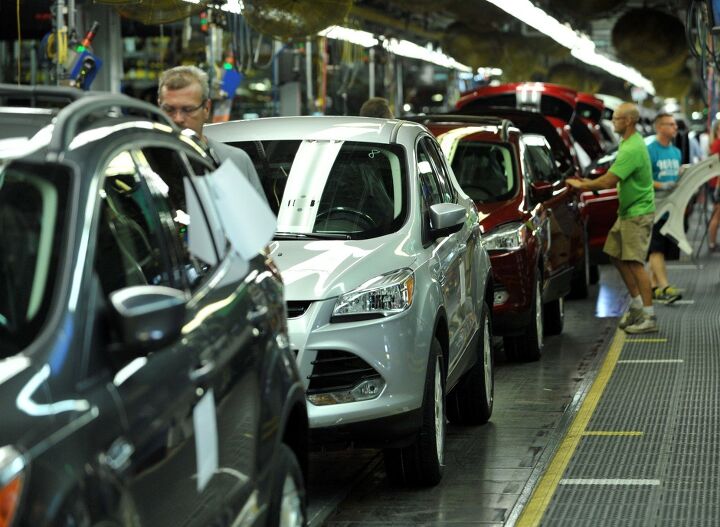




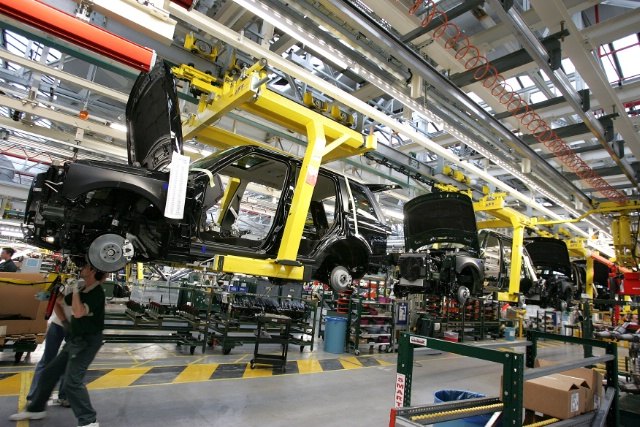
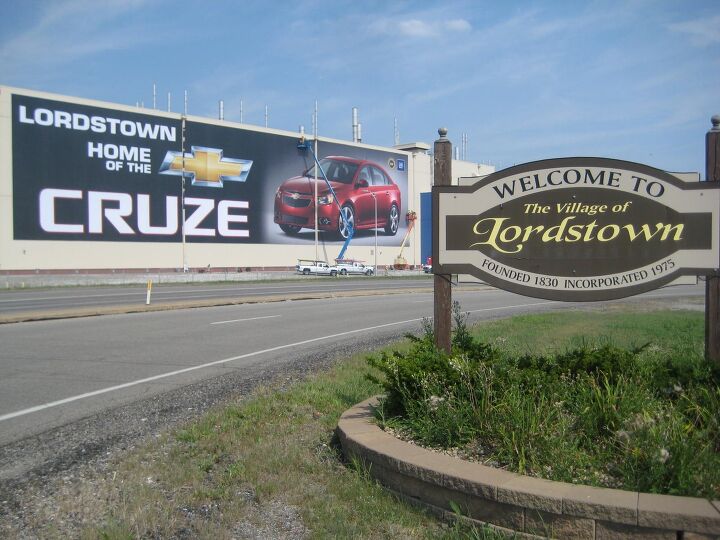



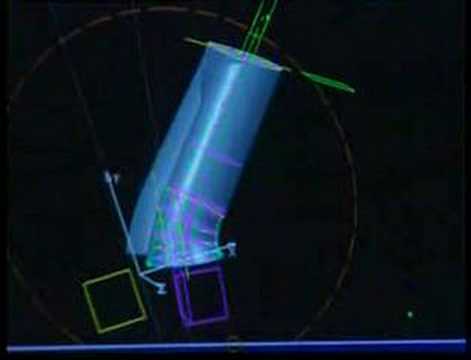




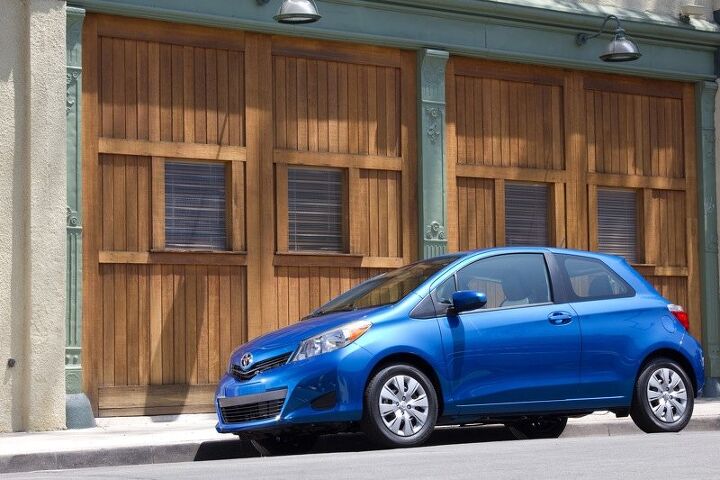


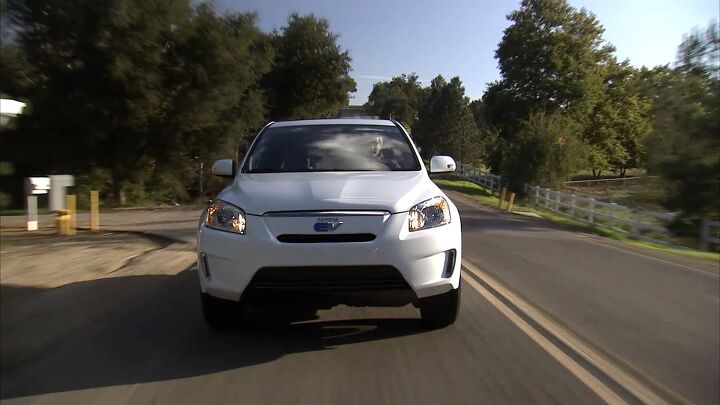












Recent Comments